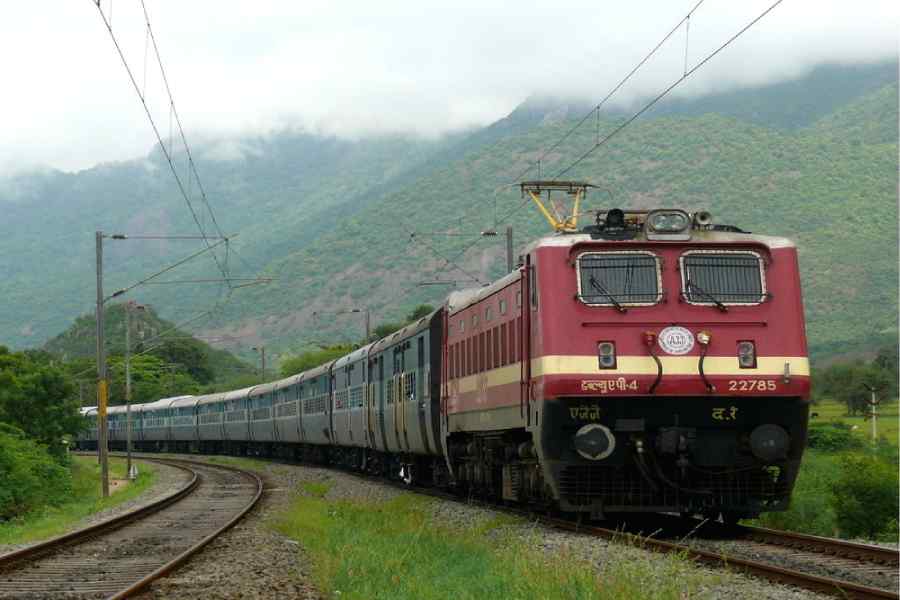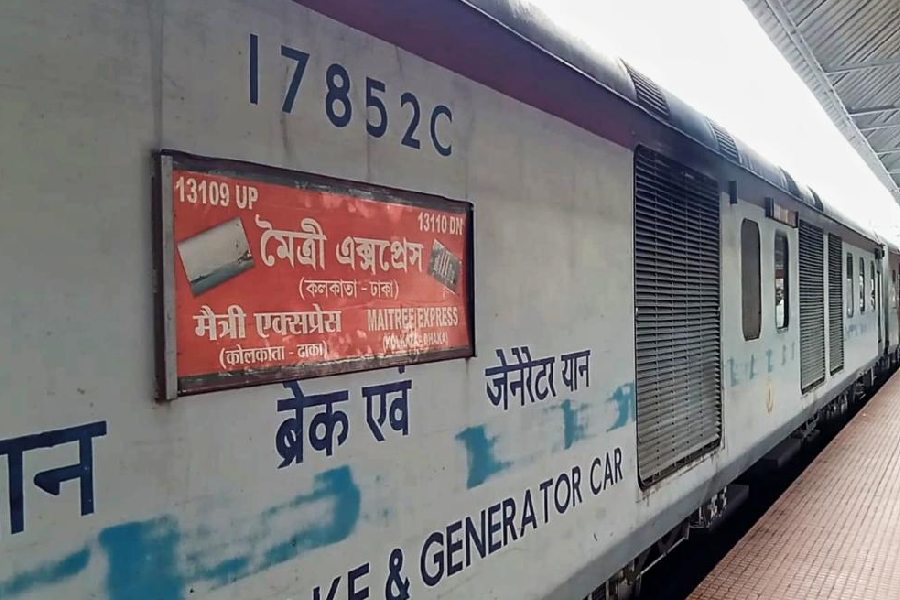A train that left Kerala on October 28 reached its terminal station near Calcutta on November 1.
What was supposed to have been a 43-hour journey turned into a 96-hour ordeal for hundreds of passengers because of congestion in the original line following the October 29 train accident in Andhra Pradesh that killed at least 14 people.
The Thiruvananthapuram Central-Shalimar SF Express had to take a detour — travel through two more states — because of the congestion.
The train had left the Kerala capital at 4.55pm on October 28. The scheduled arrival time at Shalimar was 11.55am on October 30. The train finally reached Santragachhi station, where the journey ended (short-terminated), at 4.50pm on Wednesday.
The time is enough for two round trips between Calcutta airport and JFK airport in New York, including a four-hour lay-off in New Delhi.
Several children and senior citizens had a torrid time, more so in the sleeper compartments cramped for space. Some of them took ill.
The passengers this newspaper spoke to said the pantry and cleaning staff were helpful.
The October 29 collision between two trains in Vizianagaram district of Andhra Pradesh has crippled railway services between Bengal and southern parts of India. Eighteen trains were cancelled and 23 diverted, said a railway official.
The accident comes after the horrific three-train collision in Odisha’s Balasore district in June, which killed more than 270 people.
The delay comes against the backdrop of a non-stop publicity blitzkrieg around fancier trains like the Vande Bharat.
“We had gone on a vacation to Kerala. The trip was like a dream. But the return journey turned into a nightmare,” said Chitra Agarwal, a resident of Paikpara in north Calcutta. The homemaker was travelling with her husband, four-year-old daughter and five-year-old son.
The family had boarded the train at Ernakulam Junction around 9pm on October 28.
“Both the children suffered from stomach problems and had to go to the loo several times. They had bouts of loose motion and puked multiple times,” said Chitra, who was in an AC 3-tier coach.
Following the accident on October 29, the train was stranded for almost six hours at Narsipatnam Road station, some 70km from Visakhapatnam.
The passengers headed for Visakhapatnam were asked to get down and board another train.
The Shalimar SF Express then came back to Vijayawada Junction. It took a detour via Nagpur (Maharashtra) and Bilaspur (Chhattisgarh) before entering Odisha.
“The train came along a diverted route. The route was already congested. When the train reached our jurisdiction, we prioritised it,” said Aditya Kumar Chaudhary, spokesperson for South Eastern Railway.
Passengers said the train was stranded at Narsipatnam Road from 8.15pm on October 29 to 2.45am on October 30.
“But there was no formal announcement about the delay. Passengers came to know about the accident from social media,” said K.C. Philip, a Jesuit priest who was travelling in an AC 3-tier coach.
The train was stalled en route several times, often for more than an hour. The diverted route is known for heavy freight traffic, said railway officials.
When the train reached Bilaspur, a section of agitated passengers went to the station master’s cabin to stage a protest.
The Andhra Pradesh and Odisha accidents and the disruption that followed were a wake-up call to the Centre, said railway officials.
“The attention has shifted from maintenance and operations. The sole focus now seems to be on infrastructure creation. Most of the meetings now deal with planning and expenditure for building new infrastructure,” said a veteran railway official.
Another official of South Eastern Railway said the delay was aggravated by the diversion. “The diversion did not make sense. It would have been more prudent to keep the train stranded near Visakhapatnam and wait for the restoration of the line. The journey would then have saved at least some time,” he said.
The decision to divert a train is usually taken by the zonal railway the train is under the jurisdiction of, which, in this case, was East Coast Railway.
A spokesperson for East Coast Railway said they were looking into the matter.
“It is difficult to keep a train stranded at one station for several hours, which leads to operational problems. There is an issue of capacity at a particular station,” said Biswajit Sahu, spokesperson for East Coast Railway.
“It is difficult to predict when exactly the track restoration work would be completed.”
The long wait prompted a flurry of tweets directed at the railways, many of them tagging railway minister Ashwini Vaishnaw.
“Our train no 22641 started on 28 Oct. Is already delayed by 30 hours and standing @ Bhatpara. I don’t know when will it reach destination. We are sick of sitting in train for 65 hours,” a passenger wrote on X.












